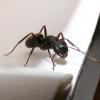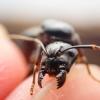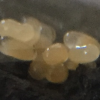Flash forward to today, I have an interesting situation: my test queen now has a thriving colony of 40+ workers, while all my other Queens kept in acceptable but smaller claustral habitats are still at 6-9 workers each.
What on Earth did I do? Was habitat size alone the reason for my one queen to get so far ahead, given that the feeding resources have been the same for all Queens?
The ONLY other thing I can think of is "psychological": my test queen gets to enjoy total seclusion in the deepest part of her habitat. My other Queens are more exposed, and maybe they are slightly stressed by that (thus refusing to focus on egg laying). Thoughts on that?
Edited by CampoKing, August 8 2018 - 8:35 PM.




















